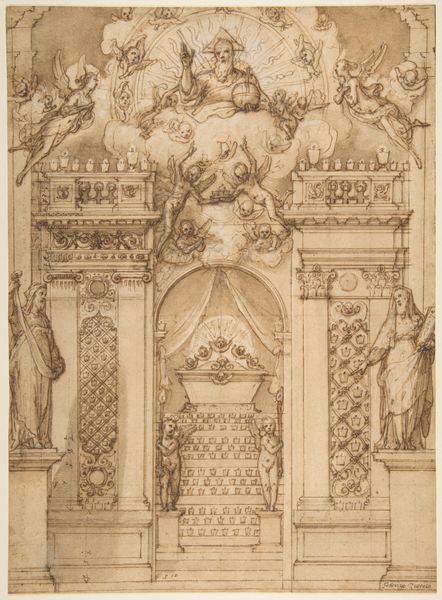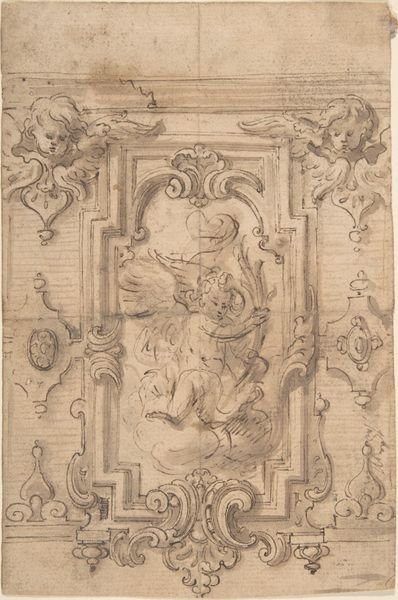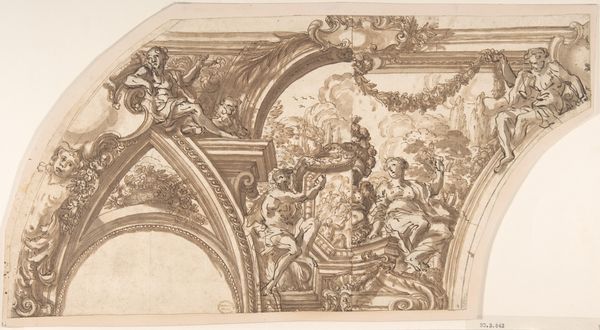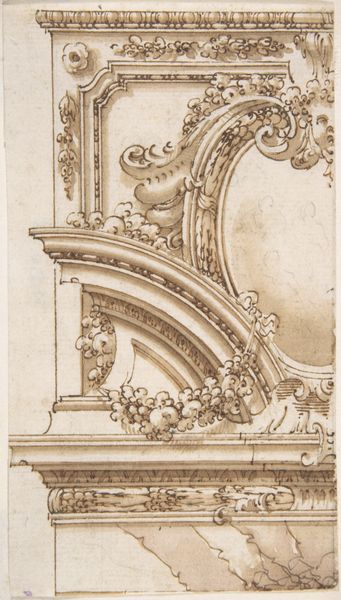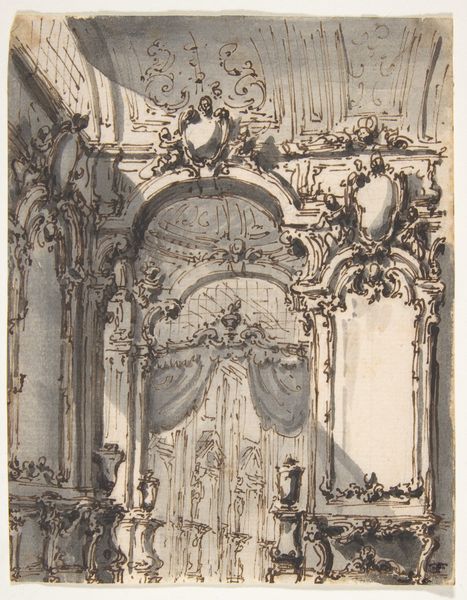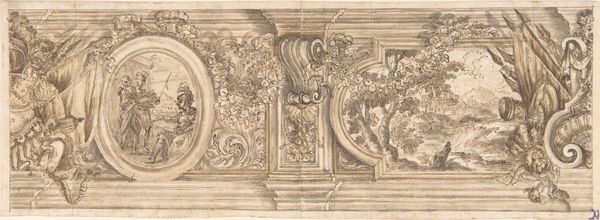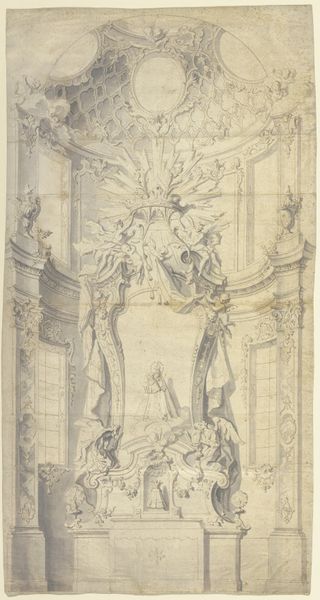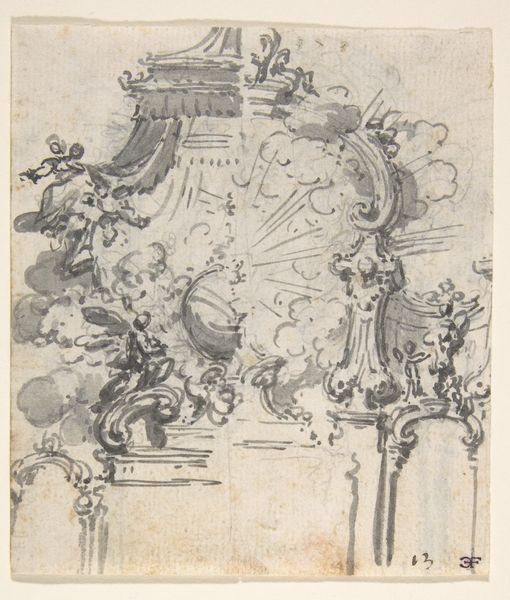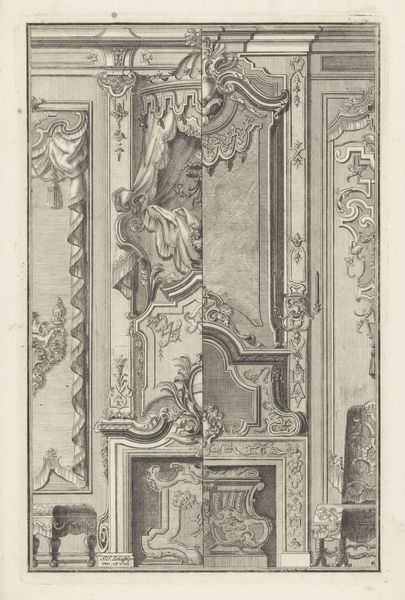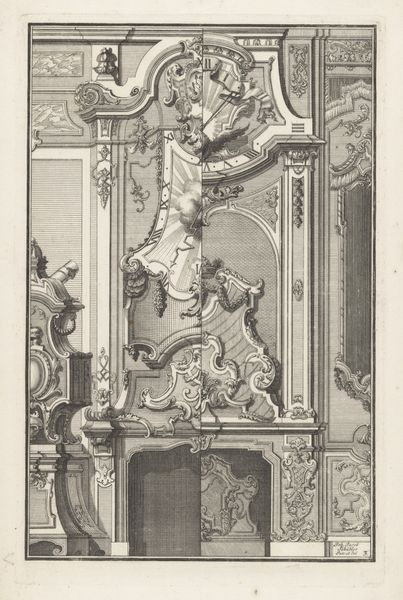
Design for a Decorated Ceiling with Statues and Stucco 1705 - 1776
0:00
0:00
drawing, print, etching, ink
#
drawing
#
baroque
# print
#
etching
#
etching
#
form
#
ink
#
line
Dimensions: Image: 9 9/16 x 7 1/16 in. (24.3 x 17.9 cm)
Copyright: Public Domain
Curator: Looking up at this design by Vittorio Maria Bigari for a decorated ceiling, dating roughly between 1705 and 1776, one immediately appreciates the Baroque period's fascination with elaborate ornamentation. This work at the Metropolitan Museum is crafted using drawing, etching, and ink, showcasing his masterful grasp of form. What's your initial impression? Editor: Well, my first reaction is honestly one of slight overwhelm. The intricacy is undeniable. The etching presents a world where nothing is unadorned, and I'm immediately thinking about the implications of such pervasive opulence. The symbolism present must reveal so much about that particular period. Curator: Indeed, the layers of meaning are substantial. If you consider that Baroque art served as a powerful tool for the Church and aristocracy, it reflects not only a desire for beauty but also an assertion of dominance. Take these cherubic figures, for instance. They recur frequently in Baroque iconography, embodying innocence, religious devotion, and celestial connection. But who benefitted from the dissemination of those images? Editor: Absolutely, the recurrence is key. These cherubs weren't just cute figures. They signaled piety, yes, but their presence everywhere normalized religious and social hierarchies. It becomes almost a form of propaganda, embedding these power structures into the everyday visual language. Looking closer at how light plays across the figures and the sculpted details, I wonder, what do these symbols communicate about Baroque notions of idealized beauty, gender roles, and class structures? How was that all connected? Curator: The swirling forms, the dynamic movement—these are hallmarks of the Baroque. It departs from the Renaissance's emphasis on balance and rationality, favoring drama and emotional intensity. The question becomes: what societal tensions or aspirations are expressed by rejecting such balance in favor of intense emotional messaging? I am also interested in considering if we may be missing additional meaning based on current tastes, since this work reflects such Eurocentric artistic practices? Editor: Precisely! These artists captured a cultural moment defined by change, reflecting religious and social norms but also planting seeds that question what lies beyond perceived social structures and limits. Understanding it becomes not just about deciphering symbols but unraveling power dynamics that might challenge contemporary theory in meaningful ways. Curator: Indeed. It’s in grappling with this visual language, steeped in both historical specificity and enduring human themes, that the power of Baroque art reveals itself. It compels us to examine not just what was depicted, but who had the power to depict it and for what purposes. Editor: An examination that remains crucial, so we can deconstruct those biases within a historical framework that promotes new views of identity in art! Thank you!
Comments
No comments
Be the first to comment and join the conversation on the ultimate creative platform.
